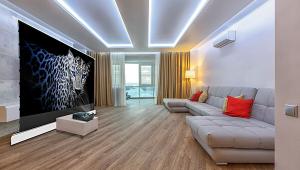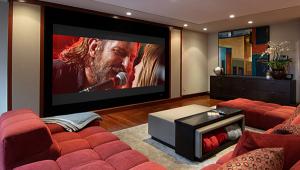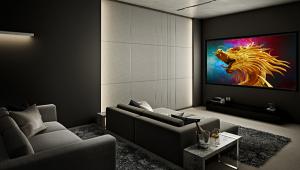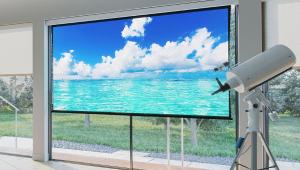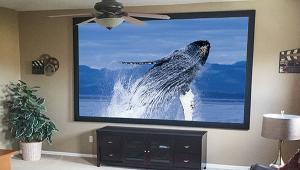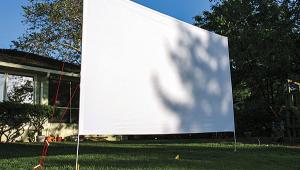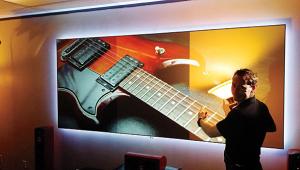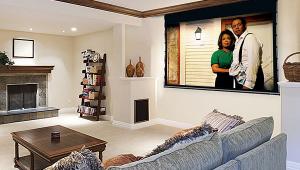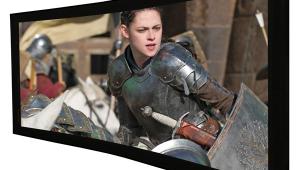This may be a dumb question, but are any of the screens innacurate on color when viewing on axis? I sit dead center on the screen, and the rest of my seating is within the viewing cone of the screen. Dead center will the Studio 130 be any more accurate than the Hi Power?
Stewart Filmscreen Reflections Active 170 3D & Da-Lite High Power Projection Screens Page 2

For 3D, the improvement in brightness of the Reflections over the StudioTek 130 was approximately 20 percent. That doesn’t sound like much, but when you’re going from a low 3 foot-lamberts, 3.6 ft-L is visually significant. If 3D is your thing,
I wouldn’t recommend going to a screen size larger than the 92-inch-wide image we used with the Reflections. At that size, and up to about 20 degrees off-axis, 3D pictures were satisfying enough to keep me watching, certainly more so than the 3.6 ft-L peak-white reading off the screen might suggest.
While both of the high-gain screens here offer good performance in 2D, the Reflections would be the better option if 2D is king in your home theater, unless you insist on an ultralarge screen. The StudioTek 130 is the best of all three choices for 2D, but it can’t be expected to service a screen much larger than 9 feet wide and still provide satisfying brightness in 2D, let alone enjoyable 3D—at least not with a popularly priced projector.
Da-Lite High Power
The Da-Lite High Power has already established a good reputation among enthusiasts and/or those who want a really big screen with lower-brightness projectors. It’s rated for a gain of 2.4 with an off-axis, halfbrightness angle of 30 degrees. Don’t confuse this screen with Da-Lite’s similarly named High Contrast High Power screen, which offers the same gain but has a half-brightness viewing angle of only 20 degrees.
Da-Lite states that the screen surface is designed to have the optical characteristics of the glass-beaded screen your father dragged out for those I-know-what-you-did-last-summer home movies. But its smoothly finished surface is totally lacking the rough, hard-to-clean finish of those relics with their klutzy, finger-pinching stands. It’s also notably free of visible texture and hotspots. In this respect, it was superior to the much-lower-gain Reflections. This lack of a hotspot is a remarkable achievement for such a high-gain screen, and the characteristic of the Da-Lite that surprised me the most.
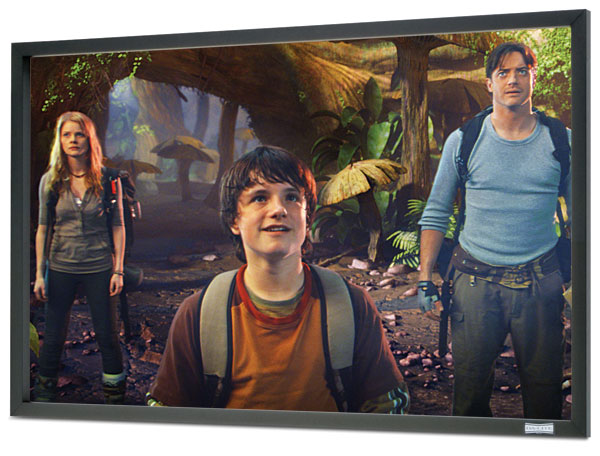
Da-Lite’s literature states that the High Power screen material is suitable for use in moderate, ambient lighting. But if, as noted earlier, you want the best picture, you’ll ignore that and go for the darkest room you can manage.
While there are higher-gain screens available, I’m not sure I’d want to use anything more gainful than this. Why? Because the change in brightness on this screen as you move off-axis isn’t subtle. It’s not debilitating—far from it. It’s just that the available brightness is so pronounced on-axis that you can’t help but notice what is happening as you move to the side. You’ll want to keep the family on close terms if you use the High Power screen.
There are definite upsides. With plenty of spare illumination on tap with a 16:9, 92-inch High Power screen, you can crank up the brightness for comfortable viewing when seated off to the side, although this might produce excess brightness for those in the middle seats. You can also light up a much larger screen with ample brightness than is possible with the Reflections.
But the real benefits to the High Power come with 3D. With an on-axis brightness of 6.8 ft-L in our setup, 3D images really popped off the screen. This was particularly evident on-axis, but still impressive even at 20 degrees off. Don’t ever let anyone tell you that brightness does not enhance the 3D experience. The JVC projector with the High Power screen produced some of the most satisfying 3D I’ve seen apart from IMAX—and a more compelling 3D image than you’re likely to see in any conventional 3D theater.
While the High Power’s off-axis color didn’t measure particularly well, the deviations were hard to spot. They won’t bother most viewers at all. Nevertheless, the Stewart screens, particularly the StudioTek 130 G3, have significantly better color uniformity.
Conclusions
If you want bright 3D at home, you must choose a projector-and-screen combo that can produce ample brightness, together with a screen that can maximize that brightness without causing serious side effects in both 2D and 3D. As I recommend in “Sony VPL-VW1000: Take 2”, the best option is two separate screens. With today’s conflicting demands for 2D and 3D, no single screen can be optimum for both. That may not be viable for low-cost projectors, but it’s the new reality.
Without going that far, either of these screens will do a good job on both 2D and 3D. Given a projector and screen size suitable for sufficient brightness with both, the Stewart is the better all-purpose option that requires fewer compromises overall. But if you can sacrifice a bit on off-axis brightness and accept a bit of color inaccuracy (the latter much less obvious than the former), 3D on the High Power will knock you out.
- Log in or register to post comments

